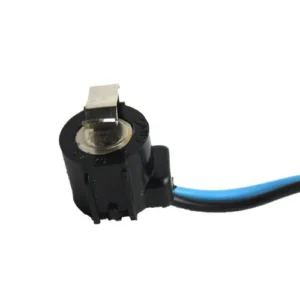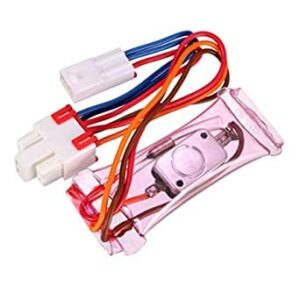Bimetal in Refrigerators:
Refrigerators have become an indispensable part of our daily lives, preserving perishable goods and ensuring food safety. These appliances rely on a sophisticated system of components to maintain the desired temperature inside the refrigerator compartment. One crucial component in this system is the bimetallic thermostat, commonly referred to as a bimetal. In this article, we will explore the role of bimetal in refrigerators, its working principle, and its significance in maintaining temperature control.
What is Bimetal?
A bimetal in refrigerator , short for bimetallic thermostat, is a type of temperature-sensitive device made from two different metals bonded together. These metals have different coefficients of thermal expansion, which means they expand and contract at different rates when subjected to temperature changes. Common combinations include brass and steel or copper and iron. This property allows bimetal strips to bend or flex when exposed to temperature variations.
Working Principle of Bimetal in Refrigerators
Bimetallic strips are commonly used in refrigerators to control the temperature. They are often placed in the thermostat assembly, which is responsible for regulating the refrigerator’s cooling cycle. Here’s how a bimetal thermostat(bimetal in refrigerator) works:
- Temperature Sensing: The bimetal strip is strategically positioned inside the refrigerator compartment, usually near the back or in direct contact with the evaporator coils. As the temperature inside the fridge changes, the bimetal strip is exposed to these temperature fluctuations.
- Bimetal’s Response: When the temperature rises, the bimetal strip expands, causing it to bend or curve in one direction. Conversely, when the temperature drops, the bimetal strip contracts and bends in the opposite direction. This bending action is a result of the differing expansion rates of the two metals.
- Mechanical Switching: The bending of the bimetal strip is used to mechanically actuate a switch. This switch can either complete or break an electrical circuit. In refrigerators, it typically controls the compressor, which is responsible for cooling the interior.
- Cycle Control: The switch controlled by the bimetal thermostat is set to activate when the temperature exceeds a certain threshold and deactivate when it falls below another threshold. This cycle of turning the compressor on and off maintains the desired temperature range within the refrigerator.
Bimetal in refrigerators, bimetallic strips are primarily used in two essential functions: temperature control and defrosting. Let’s examine each of these functions in detail:
- Temperature Control: Bimetallic strips are used in refrigerators (bimetal in refrigerator) to control the internal temperature and maintain it within a desired range. A common application is in the thermostat, which is responsible for regulating the cooling system’s operation. The bimetallic strip in the thermostat is positioned inside the fridge or freezer compartment. When the temperature rises above the set point, the strip expands, causing it to bend and actuate a switch. This switch, in turn, triggers the refrigerator’s compressor to start cooling. Conversely, when the temperature falls below the set point, the strip contracts, releasing the switch and turning off the cooling system. This cyclic process ensures that the refrigerator maintains a consistent temperature, keeping your food fresh and safe.
- Defrosting: Refrigerators and freezers accumulate frost and ice on their evaporator coils over time, which can reduce their efficiency. To prevent excessive frost buildup, bimetals are employed in defrosting mechanisms. These bimetals are typically placed near the evaporator coils. When frost accumulates, it insulates the coils, making them less effective at cooling. The bimetallic strip senses this buildup by detecting a decrease in temperature. As the temperature drops, the strip bends, completing an electrical circuit that activates a defrost heater. This heater warms the evaporator coils, melting the frost and ice. Once the temperature around the coils reaches a specific threshold, the bimetal strip returns to its original position, turning off the heater and allowing the refrigerator to resume normal cooling operations.
Significance of Bimetal in Refrigerators
Bimetallic thermostats play a crucial role in refrigerators for several reasons:
- Temperature Regulation: Bimetal strips provide precise and reliable temperature control. By responding to temperature changes, they ensure that the fridge maintains a consistent and safe temperature for food storage.
- Energy Efficiency: Proper temperature control helps the refrigerator operate efficiently. The compressor runs only when necessary, reducing energy consumption and lowering electricity bills.
- Food Safety: Maintaining the correct temperature is vital for food safety. Bimetal thermostats prevent temperature fluctuations that could lead to spoilage and bacterial growth in stored food.
- Longevity: Bimetallic thermostats are known for their durability and longevity. Their simple design and minimal moving parts make them less prone to wear and tear.
- Cost-Effectiveness: Bimetal strips are cost-effective components, which helps keep the overall cost of refrigerators down. This benefits consumers by providing an affordable and essential appliance.
- Reliability: Bimetallic thermostats are known for their reliability, ensuring that refrigerators operate consistently over their lifespan.
